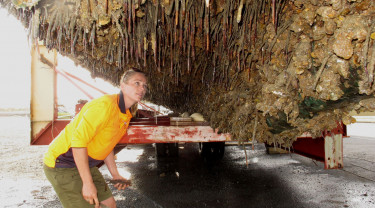Better ways to stop marine pests?
Working together on better ways to stop marine pests in the top of the North Island.

Infected hull keel and starboard side
To protect the coastlines we all love, the four northern-most regions are considering new marine biosecurity rules.
As the movement of boats increases, so too does the risk of marine pests spreading.
With support from Biosecurity New Zealand, four regional councils – Northland, Auckland, Waikato and Bay of Plenty Toi Moana – are exploring whether having hull-fouling rules that are applied consistently across several regions would be a better way forward.
Your feedback
Earlier this year, we asked the public whether we should develop consistent rules across these four regions and, if so, what those rules might look like.
A two-month feedback period closed on Friday 24 May 2019 – thank you to everyone who took the time to have their say.
You can now read the feedback summary to find out what people said.
You can also read the consultation discussion document to find out more about the problem and the options being considered.
What happens next?
The feedback has provided useful insight toward our approach to marine pest pathway management and has been provided to the four councils involved.
Our next steps (and indicative timings) are:
- Late 2019 – staff from the four councils, along with Biosecurity NZ, will work together to outline benefit, impacts and costs of the options and develop a preferred option for managing marine pest pathways.
- Early 2020 – The preferred option will be presented to the councils for consideration and their decision.
If councils decide to develop a formal proposal for an inter-regional marine pathway plan, there’ll be further opportunity for input.
Other useful information
If you’re keen to learn more about marine pests and their impacts, and what’s happening in marine biosecurity, check out these documents.
Marine biosecurity: What is it? Why is it important?
Existing Marine Biosecurity Plans in New Zealand
- Northland Regional Pest and Marine Pathway Management Plan 2017-2027 (from page 100 for marine)
- Northland Regional Pest Management Plan Cost Benefit Analysis Report – Marine Biosecurity section
- Fiordland Marine Regional Pathway Management Plan
- Top of the North and Top of the South partnerships
- MPI Biofouling management
Other key marine biosecurity papers
- Managing the Domestic Spread of Harmful Marine Organisms
- Historical baselines in marine bioinvasions: Implications for policy and management
- Biological invasions
